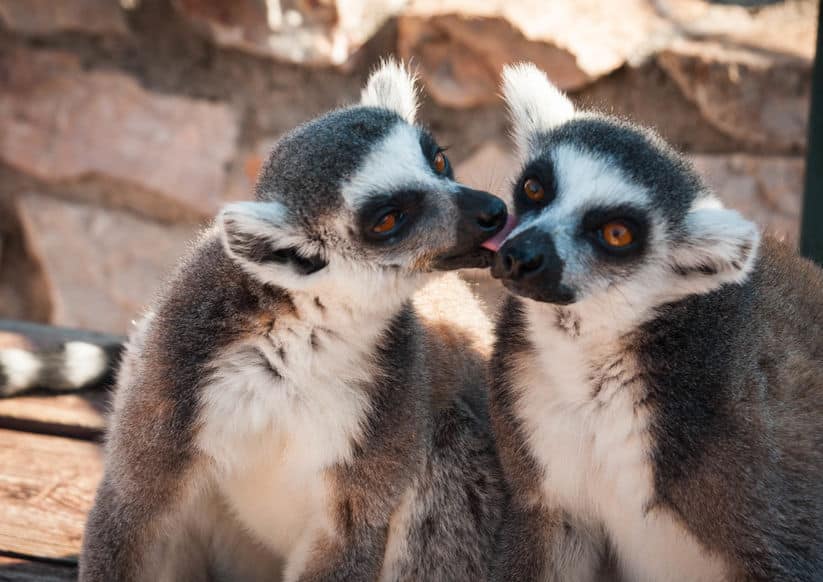By John Salak –
It’s probably not a surprise, but a long-term relationship with a significant other is hard to pull off. This not only goes for humans, but the animal kingdom too. Birds, however, are the exception. About 90 percent of winged ones form some kind of lasting bond with a feathered companion.
Mammals not so much when it comes to fidelity. Sure, some bats, wolves, beavers and foxes, among a few others, including people, go into long-term hook ups. But only three to five percent of mammals in general commit for the long haul.
Scientists at Duke University wanted to know why so few species find life-long buddies, so they turned to lemurs, a kind of distance relative of humans, whose family tree include monogamous and promiscuous members. The Duke researchers found that long-lasting relationships as well as looser connections stem from a type of hardwiring in the brains of lemurs. Unfortunately, what spurred faithfulness in one kind of lemur, encouraged mate swapping in another.
Red-bellied and mongoose lemurs definitely represent the more faithful branches of the specie’s tree. Once hooked up, couples spend a good portion of their lives working together to raise their offspring, defend their territories and just chill out together.
Not to make personal judgments, but most of the other members of the lemur family “change partners often,” the Duke team reported. Its research focused on “cuddle chemicals,” which are released during mating. Earlier research found that oxytocin and vasopressin enhanced male-female bonding in prairie voles and this led these North Carolina academics to wonder if they worked the same magic on humans.
Of course, prairie voles aren’t that similar to humans, so the Duke team focused on lemurs, who have diverse relationship models and are a closer genetic match to humans than voles.
The study used autoradiography imaging technology to map binding sites for oxytocin and vasopressin in the brains of 12 lemurs that had died of natural causes. The work found that the cuddle chemicals worked on different parts of the brains of lemurs compared to what previous showed for monkeys and voles. Unfortunately, that’s where the insights stopped short, as the researchers found few consistent differences the faithful lemurs and the free-love types.
“We don’t see evidence of a pair-bond circuit” akin to that found in rodent brains, lead author Nicholas Grebe reported. The Duke team, however, isn’t giving up. It’s about to embark on a second phase of the project to see how lemur couples behave toward each other if their cuddle chemicals are blocked.
So, did these researchers learn anything about love that can be applied to human relationships? Not much. Just because cuddle chemicals work on voles, they admit that they may not have much of a lasting impact on people.
“There are probably a number of different ways through which monogamy is instantiated within the brain, and it depends on what animals we’re looking at,” Grebe said. “There’s more going on than we originally thought.”
That may be an understatement, particularly when it comes to an extended family gathering of lemurs.













